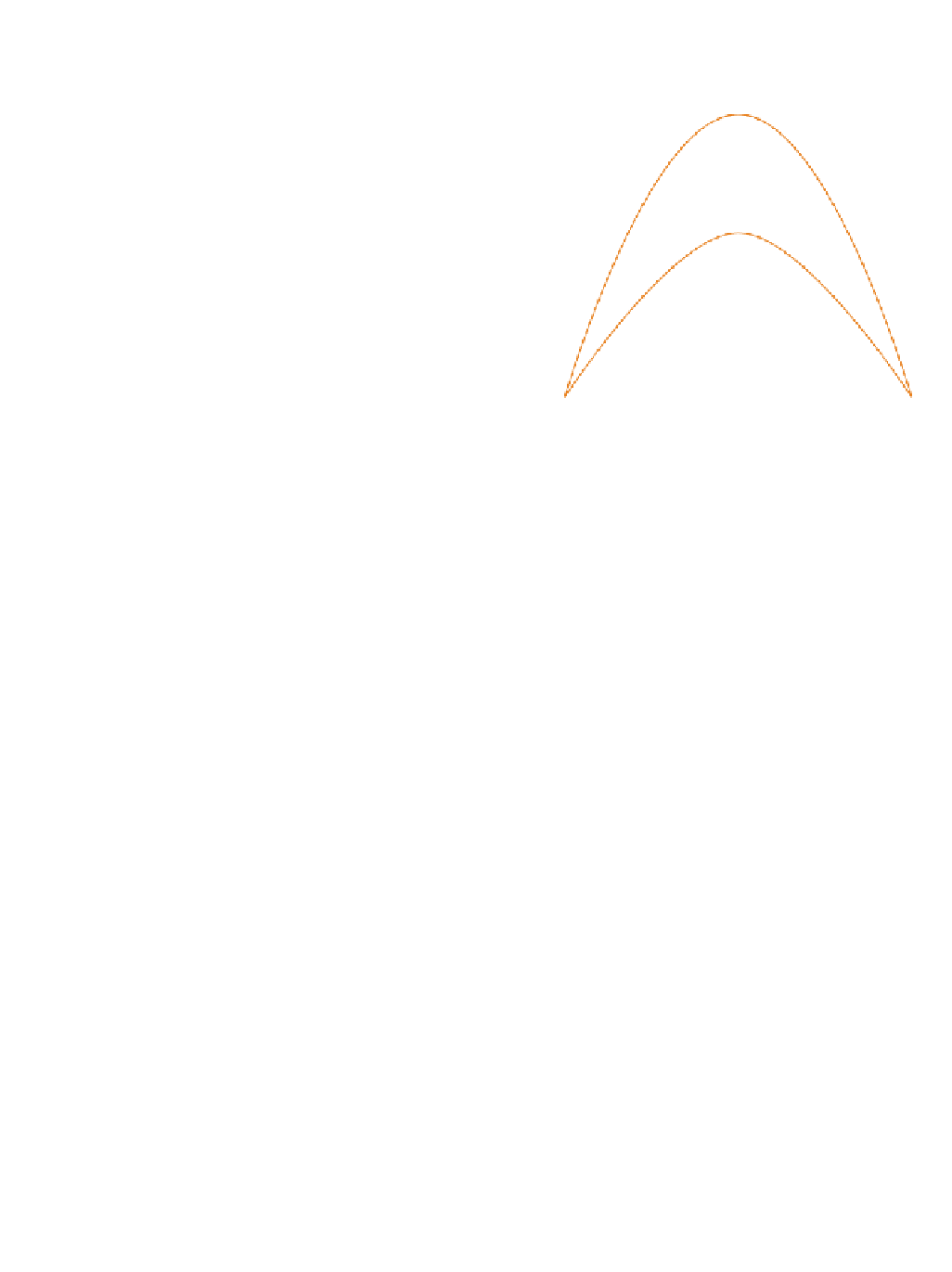Geoscience Reference
In-Depth Information
in the lowest sub-zone, and being replaced at higher
elevations by deciduous oak, beech and elm. Between
1,500 m and 2,000 m evergreen conifers become
dominant, chiefly pine, silver fir, cypress and cedar. Above
treeline at about 2,000 m, the subalpine and alpine zones
consist of heaths and cushion vegetation. Mountains
provided refugia for plants during glacial periods. Plants
have evolved there in isolation, giving rise to many
endemic species in the Iberian peninsula, Italy and the
Balkans. Shrub and ground flora are more diverse on
Mediterranean mountains than on the coasts because of
the higher soil moisture contents. It is among these plants
that endemism reaches very high levels.
In addition to elevation, but equally obvious to the
local observer, is the influence of aspect, which has an
important effect on surface microclimates and vegetation
growth, owing to the annual radiation budgets (see
Chapter 9).
It has long been recognized that aspect, i.e.
compass bearing with regard to north and south, and
topographical position, i.e. location on the slope profile,
interact to influence air temperature, soil temperature
and soil moisture. In mid-latitudes the north-facing and
south-facing slopes show strong asymmetry in total
annual incoming radiation.
Figure 25.11
shows the effects
of latitude and slope on the differences in total amounts
of short-wave radiation received by north-facing and
south-facing slopes. Assuming clear skies and no shading
effects, the differences are greatest in middle latitudes and
least in tropical and polar regions.
In reality, of course, a complication can be introduced
at the bottom of deep valleys, where there may also be an
effect due to shading by surrounding hills. All these
influences can be studied by recording in the field the three
parameters of aspect, gradient and angles to the
surrounding horizon. These parameters can be used either
in nomograms or in computer programs to calculate total
annual and daily incoming radiation, including shading
effects. This calculation allows a long list of ecologically
important variables to be estimated: potential evapo-
transpiration, actual evapotranspiration, gross produc-
tivity, soil moisture content. The control of incoming
radiation on plant communities is broadly viewed as
the dual effect of temperature and moisture: a direct
temperature effect on the plant via ambient temperature
and biochemical reaction rates, and an indirect effect on
the soil water content via evaporation and transpiration
rates. The two effects are well integrated in the real world
and it is often difficult to disentangle them. However,
research indicates that temperature has a greater influence
on floristics, i.e. the plant species on different aspects,
whilst soil moisture governs biomass of vegetation and
100
30°
50
15°
10°
5°
0
0°
45°
90°
Latitude
the ground surface, and the secondary effect of slope angle.
percentage cover, i.e. the productivity of
the plant
community.
The terms 'patchwork' and 'mosaic' are frequently used
to describe the distribution of Mediterranean vegetation.
In terms of the diversity concepts introduced in
Chapter
22,
this is reflected in the large beta diversities which
occur along topographic transects in the region.
Figure
25.12
shows the results of several years of research in
southern France. The alpha diversity is shown by S, the
number of species, and the beta diversity by the B values.
Here slope and land use combine to give a very diverse
landscape.
Throughout the region well drained, arid valley sides
contrast with valley floors, where perennial or ephemeral
streams allow denser riparian vegetation to grow. Valley
bottoms are potentially hazardous habitats for plants
because of flooding, sedimentation and abrasion but there
are robust plants which can tolerate such conditions, e.g.
tamarisk, retama broom, oleander. The effect of soil on
vegetation distribution is largely a matter of the influence
of soil on the amount of available moisture stored in the
profile (the available water-holding capacity, AWHC).
This brings out the expected contrasts between thin, rocky
soils and deeper profiles. At the species level, though,
there can be contrasts in the plants of basic soils, e.g.
calcicole plants on calcareous soils over limestone, and
acid soils, e.g. calcifuge plants on non-calcareous soils over
sandstones. Thus particular species of lavender, oak and
rock rose, for example, are indicators of basic and acid soil
































































